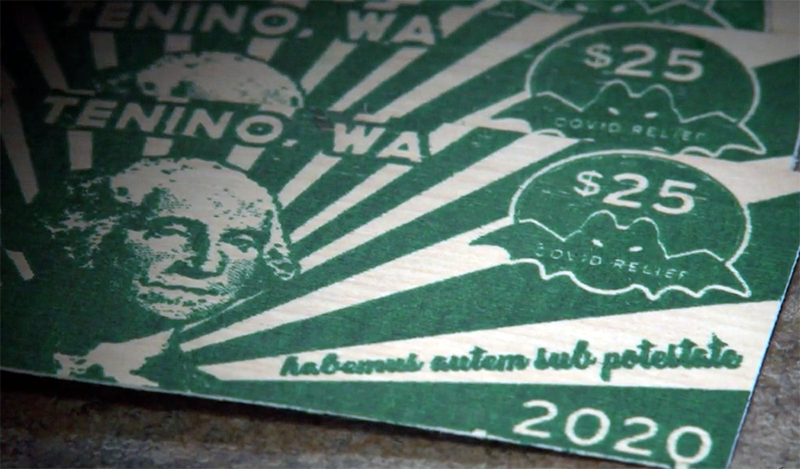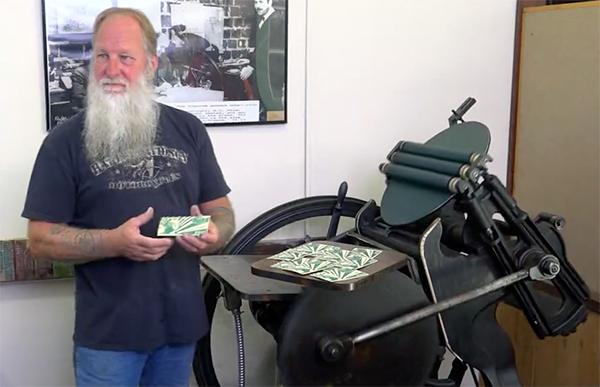This City Is Using Wood Instead Of Money
To help businesses and residents stay afloat during the coronavirus pandemic, Tenino, Washington is printing its own currency out of wood.
By Jessie Schiewe
Credit: Screenshot
In most places, a stack of wood can’t buy you much if anything. But that’s not the case in Tenino, Washington.
In this small, formerly industrial city in the western portion of the state, a stack of wood can buy you groceries, pay for a meal at a restaurant, or cover your monthly water bill.
With a population of less than 2,000 people, Tenino has been printing wooden money — or “scrip” — since May to help keep the local economy afloat during the coronavirus pandemic. In all, they’ve printed $10,000 worth of the currency, which is issued on thin sheets of wood the size and thickness of index cards. Emblazoned with green text and a Latin phrase translating to “We’ve got this handled,” each bill is numbered and signed, and features an outline of George Washington’s face.
Tenino’s “COVID relief” program, which was approved by the Washington State Auditor, is not a new development. The city printed its own wooden money once before, in 1931 during the Great Depression after its local bank closed. The move helped popularize the small town which for a while was known as “the home of wooden money.”
The only person in town who knows how to operate the 19th century machine that prints the wooden money is Loren Ackerman, the president of the Tenino Depot Museum. (Screenshot)
Today’s wooden bills are printed using the same machine as the one used back then: an 1890 Chandler and Price platen press.
Just about every business in town, including the gas station, auto-body shop, and drug store, accepts the wooden money. Businesses, in turn, can redeem the currency at City Hall for cold, hard — and paper — cash.
For Tenino residents like Laurie Mahlenbrei, a school bus driver, the wooden money has been a godsend, helping her to cope while she’s been out of work. She’s used it to buy groceries at the market, using one slice of wood to pay for a whole basket’s worth of items, including blue-cheese salad dressing, butter, ground turkey, cans of grain-free dog food, and a new toothbrush.
“Every once in a while, I run into a cashier that hasn't taken [the wooden money] before,” she told CBS News. “But it’s just a blast, you know? I mean, I’m paying for food with something historical, you know?”
The uniqueness of the wooden money program has long caught the attention of collectors. In 1933, when Tenino ceased printing the scrip, only $40 of the total $10,308 put into circulation was redeemed, Secretary of State Kim Wyman wrote on her blog “From Our Corner.” The rest of the wooden money was kept as souvenirs or sold as collector’s items.
One of the wooden bills used in Tenino, Washington as scrip during the Great Depression. (Wikimedia Commons/Joe Mabel)
Today, one of the largest collections can be found in the local Edward Jones office, which is ironically located in the town’s old Citizens Bank of Tenino building from 1931.
Interest in the wooden money has sparked again with the latest issuance of bills. In fact, someone already offered Mahlenbrei $300 for her lot — but she turned them down.
Not only is the money supposed to stay within the community, she said, but spending it is just “too much fun.”























